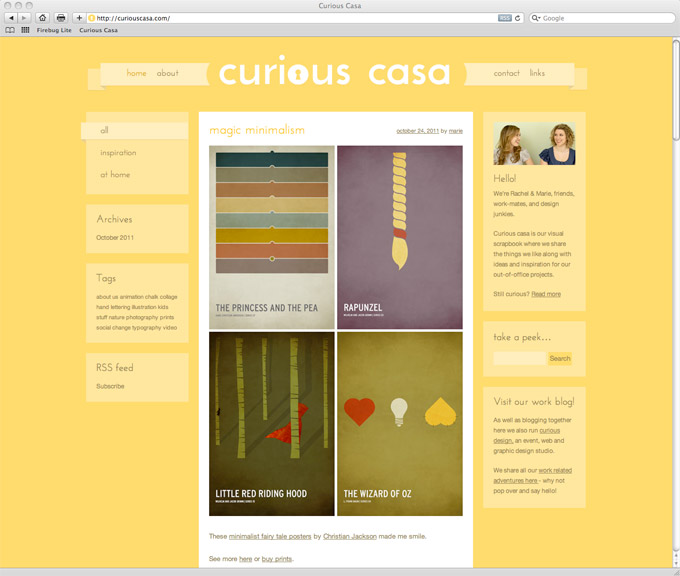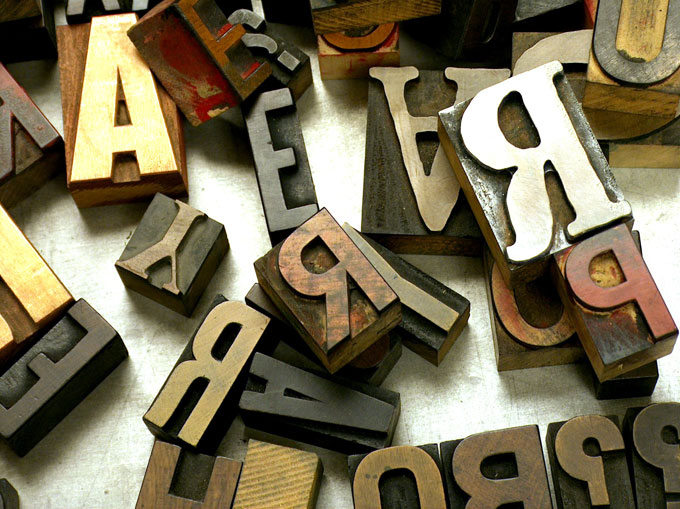Congratulations to Bradshaws Lane Surgery whose new website we launched today!

Here at curious we build many different types of websites, from wedding blogs and classified sites to company websites, and everything in between, but one thing that most of them have in common is the Content Management System that they are built in: WordPress.

A Content management system is software which allows you to easily add and make changes to the content on your website. (For more details see our CMS post)
We are not the only WordPress fans - WordPress is currently the most popular CMS in use on the Internet. But what makes it so popular?
WordPress is Open Source
Unlike some other CMSs, WordPress is free to use. When budgets are tight this is a big advantage!
WordPress Plugins
One of our favourite things about WordPress is the huge range of plugins available. A plugin is a small program that can add extra features to WordPress. There are plugins for everything from fancy galleries and slideshows to facebook integration. We have a library of trusted plugins that we return to again and again to add extra functionality to our websites.
WordPress is Search Engine Friendly
Google rankings are very important – a beautiful website is useless if no-one can find it. WordPress is built to be easy for search engines to find and we can customize it for you to improve your results even further.
Built-in Blogging
A blog is a fantastic way to engage with your customers or clients and keep them up to date with all of your news.
WordPress was originally developed as blogging software and it has excellent built-in blogging tools. Uploading images, saving drafts, managing comments, blocking spam, and tagging and categorising posts are all simple tasks in WordPress.
WordPress is Easy to Use and Update
The most important feature of WordPress for us is how easy our clients find it to use. Writing and updating content and adding images video or audio are all simple tasks.
Got questions about WordPress? Get in touch –we’d love to help!
This week we are looking at vectors, but not the type you did in maths in school!
If you are sending logos to a designer for a poster, flyer or other piece of promotional material they will usually ask for these logos to be supplied as vector images. But what exactly is a vector image and what makes it different from other images?
Illustrations, logos and text are usually created and saved as vector images. Unlike digital photographs and other bitmap images, which are made up of pixels, vector images or files are made up of scalable shapes. This means that they can be stretched or shrunk without losing quality.

This image shows the difference in image quality between a magnified vector and a magnified bitmap - vectors can be scaled without losing quality while bitmaps cannot.
Vector images are also not confined to a rectangular shape, they can be anything from a simple circle to a very complex swirling pattern. This makes vectors easy to layer on top of other images such as a coloured backgrounds or a photograph. It is also much easier to change the colours in a vector image than other types of image.
Vector files are often created by special software, so you may not be able to open them unless you have this software installed. You can usually tell if a file is a vector by its file extension.
.ai .eps and .svg are common vector file extensions. Vectors can also be saved as pdf files, though not all pdf files are vectors.
Have questions about vector files or other file types? Get in touch, we’d love to help.
Graphic Designers tend to love typefaces, and we are no exception! If you spend time around either of us, you are likely to hear the term typeface and font crop up in conversation.
While the two words are often used interchangeably they actually have two different meanings, so in this week’s Design A to Z we’re looking at the difference between the two terms.
Typeface refers to the design and shape of a particular set of letters, numbers and symbols. Type designers create typefaces. Times New Roman is a typeface, not a font.
Originally, when printing was still done with little blocks of metal or wood, the word font was used to describe a particular style and size of a typeface. Times New Roman Bold 12 point is a font.
Font is now also used to describe the digital file on your computer which contains the typeface information.
One way to understand the difference is to compare a typeface to a song and a font to an mp3. An mp3 file contains a song, but you wouldn’t say “Bohemian Rhapsody is an mp3 by Queen” you would say “Bohemian Rhapsody is a song by Queen.”
Not sure which typeface to use for your next project? Get in touch - we’d love to help!
One of the reasons we called our company curious is because we think that getting to know our clients and understanding their design needs is one of the most important factors in producing good design. Because of this, the very first thing we do in any design project, before research, sketching or even quoting, is to ask questions.
Some people like to sit down and go through these questions in person, others prefer a chat over the phone, while others want a questionnaire which they can read through and email back. Regardless of the format, our questions usually fall into three broad categories -
Background Information
Style and Tone
Technical & Practical Requirements
Background Information
These questions help us to get to know you, your services/products and your industry. E.g. we will ask for links to competitors websites and for an overview of your company’s history, products and services.
Style and Tone
These questions help us to establish the style of design that you are looking for. We ask for links or examples of designs you like and (just as importantly!) dislike, as well as any company branding and logos.
Technical & Practical Requirements
This section covers the knitty gritty details of the project. For print design we ask for sizes, the number of pages and quantities required. For websites, questions include the number and names of pages, and information on any special requirements such as galleries, forms, event feeds, blogs, classified sections, social media integration etc.
Got some questions of your own? Get in touch, we’d love to help!
As well as blogging here about curious news and design tips we have also started another blog - curous casa, a little online scrapbook where we share inspiring and interesting titbits from our online travels as well as our out-of-office projects and adventures.

Pop over and say hello or let us know if you have any suggestions for a post! We’d love to hear from you.
Congratulations to the bulletinboard.ie team who are launching their new classifieds site for tutors and second hand books and equipment today.
We really enjoyed working on this site and branding and are very excited to see it go live.
To celebrate the launch bulletinboard.ie are offering free 3 months listing if you place you ad before the end of the month - just enter the coupon code “pin” when placing your ad.
Click here to check out the site and place your Free ad!
One of the highlights of our job is getting a new job back from the printers - it’s very exciting to see your work come to life!
If you are unfamiliar with the print industry however, it can be tricky to know which type of printer and print technique to use. With this in mind, we have put together this simple guide to explain some of the more common printing techniques.
 Wooden type - these letters can be used in letterpress printing
Wooden type - these letters can be used in letterpress printing
Letterpress
Letterpress is the original commercial printing technique.
Letterpress is a relief printing technique, this means that a raised surface has ink applied to it which is then pressed into a sheet of paper. The raised surface could be wood or metal type, an engraved plate or even a woodcut.
Johannes Gutenberg’s famous printing presses, which sparked the Printing Revolution in Europe in the 15th century used the letterpress technique, and letterpress remained the main printing process up until the 20th century.
While it is very labour intensive, Letterpress has enjoyed a revival recently and is often used for wedding invitations and business cards. The impression made by pressing the text and images into the paper is now often exaggerated for extra impact.
Offset Lithography
This is the most common printing process today and is sometimes referred to as Litho printing or Offset for short.
Offset lithography uses different printing plates for different colours. A black and white design would only need one plate while a colour photograph needs four - Cyan, Magenta, Yellow and Black - which combine together to create all the colours in the image. Special colours and inks can also be used. These are called spot colours and require an extra plate.
The cost of creating these plates means that this process is usually not suited to small jobs (or runs) but it is usually the most cost effective method if a large quantity of prints is required.
Digital Printing
Digital print presses are essentially very big and very fast colour laser printers.
Digital printing does not offer the same quality, flexibility and colour control as Offset printing. However, a high quality digital printer will still produce good results and as there are no plates to prepare turnaround times are shorter and set up costs lower. This makes digital printing a good choice for small print runs.
Other printing processes include screenprinting, thermography, engraving, gravure, foiling and more.
Not sure which print process is right for your job or want to use one of the processes we’ve mentioned but not sure where to start? Get in touch - we’d love to help!
Congratulations on launching this morning to Ciara from Style Serendipity, a new Irish wedding blog and classifieds site.
As two ladies with weddings on the brain, this was a dream project for us and we really enjoyed working with Ciara on the design and development of the site.
In the lead-up to your big day and looking for some inspiration? Have some bits and pieces from your own wedding you’d like to pass on or sell? Or maybe you’re just a fan of pretty things? Pop over to Style Serendipity!